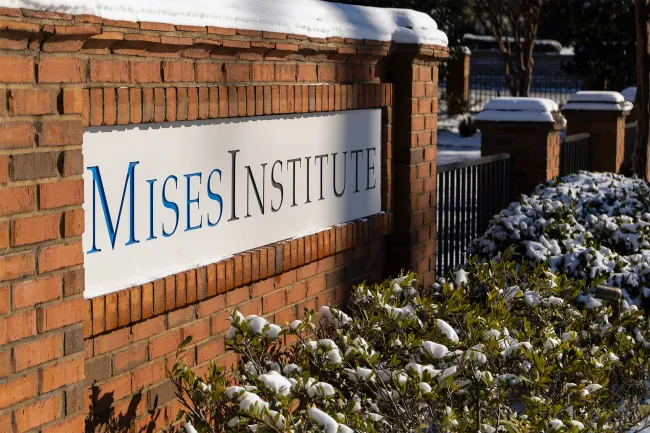Bureaucrats are well known for their economic illiteracy, but few have displayed it with such glaring buffoonery as Bill Pulte, the current Director of the Federal Housing Finance Agency (“FHFA”) and a Trump nominee.
Typical examples of Pulte’s irritating squeaks are pasted below from his Twitter account.



Far from defending Jerome Powell—another bureaucrat who is only slightly less maniacally obsessed with the provision of easy money than his counterparts in the Trump administration—let us simply examine Pulte’s comments and decide their merit.
The Setup
Pulte makes two distinct assertions that need to be evaluated. First, that lower interest rates will “help the housing market.” Second, that the cause of the lack of home affordability is so-called high interest rates. Underpinning these assertions are incorrect premises that must also be called out in any thorough explanation. As Swift said, falsehood flies, and the truth comes limping after it.
To that end, Pulte’s arguments are premised on the idea that reducing the Fed Funds Rate, which Powell and the Fed control, will directly reduce mortgage rates. While these two rates have generally moved together historically, Pulte is apparently unaware of the state of the US Treasury market and the bifurcation of these two rate paths over the past several months. As the Fed Funds Rate has fallen a full percentage point since the middle of 2024, US treasury yields have actually increased, signaling an increasing concern from the bond market with the United States’ penchant for rate manipulation, monetary inflation, and fiscal improvidence. Lowering rates in the face of this will only exacerbate that dynamic.

Furthermore, the idea that today’s mortgage rates are “high” by any reasonable standard is false. Only in comparison to the insane ZIRP policies of 2020-2022 can such a statement even be considered plausible. Between 1971 and 2025, 30-year fixed rate mortgages averaged over 7.7 percent, one full percentage point higher than today’s rates. Mortgage rates today are thus below the long-term average.
Spare me outlier arguments implicating the late 1970s and early 1980s in the higher average without considering the massive compression of mortgage rates from 2010-2022. The last two years of this range saw rates below 3 percent, an all-time low since Freddie Mac began collecting this data in 1970.
“Lower Interest Rates Will Help the Housing Market”
Pulte’s first assertion is entirely accurate, but only in the right context, which Pulte of course fails to provide, namely, lower interest rates will help the corporate players in the housing market—homebuilders, mortgage brokers, and the like—by increasing transaction volume and unit prices. However, this is at the expense of the average homebuyer who sees prices go up on top of the massive home price inflation of the last several years.
Note that home prices—as tracked by the Case Shiller Home Price Index—have risen at an annualized rate of 8.8 percent since 2020 while nominal wages are up at an annualized rate of only 4.5 percent. Over five years, that represents a drop of 20 percent in home affordability. Let us not forget the federal government’s longer-term impact on home prices since the inception of large-scale housing market intervention in the 1930s.
As I’ve written previously, from 1940—an approximate start date for earnest government intervention in the housing market—to 2024, home prices have increased by nearly 15,000 percent, from $2,938 to $426,900. The average home price in 1940 was 2.1x the average salary. Today, it is 7.1x the average salary. In “inflation-adjusted” terms, homes are four times more expensive today than they were in 1940, indicating that home prices have risen far faster than the “general price level.” Lowering mortgage rates benefits homebuilders and ancillary industries while squeezing out the typical middle-class homebuyer.
“Pulte’s Law”
Pulte’s second assertion—that home affordability improves as interest rates go down and worsens as rates go up, which I hereby name “Pulte’s Law”—is hogwash. In the 40-year history of the Case Shiller Index, which tracks home prices nationwide, only once has the systematic lowering of interest rates by the Fed coincided with decreasing home prices. That coincidence occurred after the Great Financial Crisis which began in 2008 and was precipitated by excessive lending to homebuyers—especially “subprime” buyers—for several years prior.
Out of contempt for the intellect of his Twitter readers and the American public in general, a rhetorical midwit like Pulte is using a sleight of hand to insist that home affordability is improved by lower interest rates. That sleight of hand is known as the ceteris paribus fallacy.
If a home costs $500,000 and mortgage rates are 7 percent, the monthly payment on a standard 30-year fixed mortgage would be roughly $3,350. If mortgage rates declined to 4 percent the very next day while all else remained equal (i.e., ceteris paribus), the monthly mortgage payment on that home would decrease to approximately $2,400. Voila, says Pulte, home affordability has increased!
The key error here—well known to any high school student taking an economics or calculus class—is the assumption that all else does, in fact, remain equal. The brute force provision of lower interest rates is highly price inflationary. In the real world, that 4 percent mortgage rate would be applied to an immediately higher home price, thus offsetting the imagined mortgage payment reduction. Furthermore, unseen and unfactored into the original analysis, systemic price inflation would further eat away at the homebuyer’s affordability situation. Property taxes, home insurance, maintenance costs, and other ownership-related expenses would all increase in the inflationary environment.
Does all of this sound familiar?
The Bid-Ask Spread
In any for-sale market, the difference between what a seller wants to receive and what a buyer wants to pay is called the bid-ask spread.
In the housing market today, that spread is wide. Homes are therefore staying on market longer as sellers cling to market dynamics—obscenely high prices, quick sales, competing offers, etc.—that existed over the last few years and were artificially created by ZIRP and trillions of freshly-printed dollars. Buyers, on the other hand, can’t afford further price increases and are waiting for much-needed price deflation before value is apparent in the housing market.
The fact that Bill Pulte and the Trump administration want to repeat the inflationary ZIRP cycle indicates not only economic illiteracy, but contempt for the average American.


